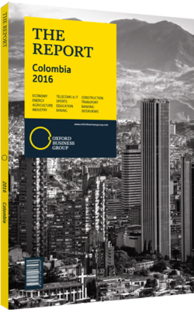Carlos Jacks, President, CEMEX: Interview

Interview: Carlos Jacks
What are your expectations for the construction materials industry in 2016?
CARLOS JACKS: It is possible that several of the factors that caused market volatility in 2015 will remain challenges in 2016. There are significant unknowns with regards to oil prices, possible hikes in interest rates and the strength of the US dollar compared to emerging market currencies. This will have an effect on the Colombian peso and its rate of fluctuation during 2016. Under this scenario, and considering the expected fiscal deficit, one can expect the Colombian economy to continue to face significant challenges. Nonetheless, construction activity in the country should remain strong, especially in light of the programmes considered in the Plan to Stimulate Productivity and Employment (Plan de Impulso a la Productividad y el Empleo, PIPE 2.0), which should help fuel the industry throughout the year.
How would a decrease in public spending in the medium term impact contractors and construction material sales in Colombia?
JACKS: Although the construction sector is cautious as a result of the government’s financial constraints, there are some relevant issues that help to explain public spending plans and the state-sponsored housing programmes.
First of all, although the government was able to provide 100,000 free social housing units by December 2015, there is still a significant housing deficit in the country that needs to be addressed. Second, the government has earmarked significant funds to continue executing important housing projects during the remainder of the current administration. Third, the government’s housing policy has also significantly improved over time in terms of both efficiency and cost efficacy.
It is important to remember that in 2015 the Ministry of Housing announced the development of a series of new programmes, such as “Mi Casa Ya” (My Home Now), aimed at expanding the number of beneficiaries of housing solutions. This was mostly accomplished by focusing on partial rather than full subsidies, and by reaching segments of the population with some income, thus increasing the impact of these programmes.
All in all, these three factors, when looked at as a whole, signal a continuation of the housing sector as a relevant engine of growth for the economy, without exerting much pressure on the public accounts. Moreover, the government’s fourth-generation (4G) projects and initiatives such as public-private partnerships (PPPs) should provide funding from private parties for construction activities in the short and medium term.
What are your expectations for the National Infrastructure Agency’s 4G plans?
JACKS: The first and second waves of 4G contracts have been fully awarded through the signing of various concessions, including a number of PPPs. These waves combined include 19 projects, for a total investment of around $8.5bn. According to infrastructure authorities, the first wave has already obtained the required financing from private financial institutions, and should start the early stages of the construction process in the coming months. The projects included in the second wave should obtain financial closure by the second half of 2016.
In this sense, one can expect the very first volumes of cement to be sold to these projects during 2016. Industry watchers will then observe an increase from 2017 onwards. We believe that as a result of these initiatives, infrastructure will play a more relevant role for the construction industry and the Colombian economy in general, and will help improve the country’s competitiveness and the standard of living of its citizens across the country.
You have reached the limit of premium articles you can view for free.
Choose from the options below to purchase print or digital editions of our Reports. You can also purchase a website subscription giving you unlimited access to all of our Reports online for 12 months.
If you have already purchased this Report or have a website subscription, please login to continue.

